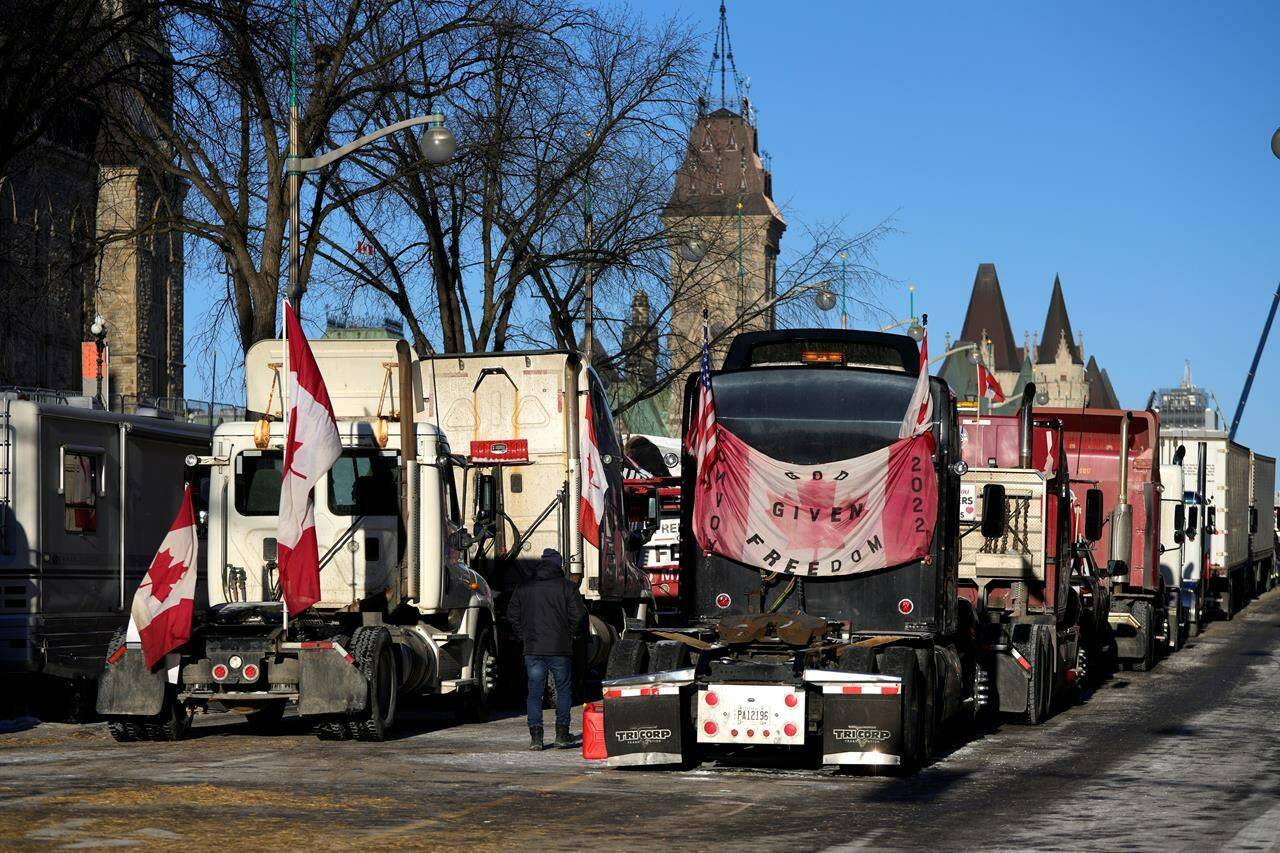The parliamentary security force took issue with the City of Ottawa’s plan to move “Freedom Convoy” protesters’ semi-trucks out of residential neighbourhoods and onto the street in front of Parliament Hill, according to evidence released through a public inquiry on Monday.
The Public Order Emergency Commission was told the Parliamentary Protective Service, which guards government buildings in the area, disagreed with a plan the city had arranged with some convoy organizers on Feb. 12 to see protesters’ trucks moved out of residential areas and onto Wellington Street.
“The (security service) expressed concern with respect to Wellington being turned into a parking lot of 200-plus trucks,” reads a summary of an interview city manager Steve Kanellakos gave to the commission, which is examining federal government’s decision to invoke the Emergencies Act.
“The (police) then stopped moving vehicles close to Parliament Hill.”
The related documents were released on Monday as the commission held its third day of public hearings at the Library and Archives Canada building in downtown Ottawa. Public hearings are scheduled to run until Nov. 25.
On Feb. 13, Ottawa Mayor Jim Watson announced the details of a proposed deal with some protest organizers that would see 400 removed from residential areas, which was expected to take several days.
The summary released through the public inquiry outlined how Kanellakos was not sure whether the parliamentary security service had been consulted on the plan before the Ottawa police began moving trucks onto Wellington Street. It was already home to dozens of large trucks, as well as other vehicles and tents set up by protesters.
The federal government was also not consulted on plans to move more trucks near Parliament Hill, according to the summary.
During the hearing on Monday, the commission was shown an email sent Feb. 14 — the day the deal kicked in — by Larry Brookson, acting director of the Parliamentary Protective Service, to Kanellakos looking to set up a meeting about the decision.
“Quite honestly Steve I am at a loss as to how this sort of agreement could have been worked out with a clear disregard to security,” said the email from Brookson.
“Especially considering that we just finished a bomb blast assessment which included the threat of (an) explosive being transferred via large vehicles.”
The commission heard that such a meeting never happened. Peter Sloly, who was then Ottawa police chief, resigned from the role the next day. The day that Brookson sent his email was the same day Prime Minister Justin Trudeau and his government announced a decision to invoke the Emergencies Act.
Police spent the next few days warning protesters that it was time to leave, and by the weekend the police moved in with force to clear those who refused, arresting more than 100 protesters.
The proposed deal from the city to move convoy-related big rigs came as anger mounted from residents who were fed up with the round-the-clock noise brought by the protesters who arrived at the end of January, and stayed through most of February.
Through documents and testimony presented Monday, the commission heard the idea for brokering such an arrangement came after police liaisons flagged a breakdown in communication with convoy leaders.
Some protesters still wanted to have a meeting with the city.
The summary of Kanellakos’s interview with the commission says Watson was “initially uncomfortable with the idea,” but as city manager he met with some representatives of the convoy.
“Kanellakos wanted to use this opportunity to get the protesters out of residential areas,” it read, adding he briefed others on the talks, including Watson and police.
“Everyone on the call agreed that getting protesters out of residential areas would be positive, both for the residents and to reduce the footprint of the protests.”
Top city officials were involved in the negotiations, as was Dean French, the former chief of staff to Ontario Premier Doug Ford.
In the end, the commission heard the deal prompted just about 40 large trucks and other light vehicles to leave five or six residential streets.
“As they did not respect their end of the bargain, the protesters never followed up with the city to request a meeting with the mayor,” the summary presented Monday read.
—Stephanie Taylor and David Fraser, The Canadian Press
RELATED: Protest convoy truck noise caused hearing loss, woman tells Emergencies Act inquiry

